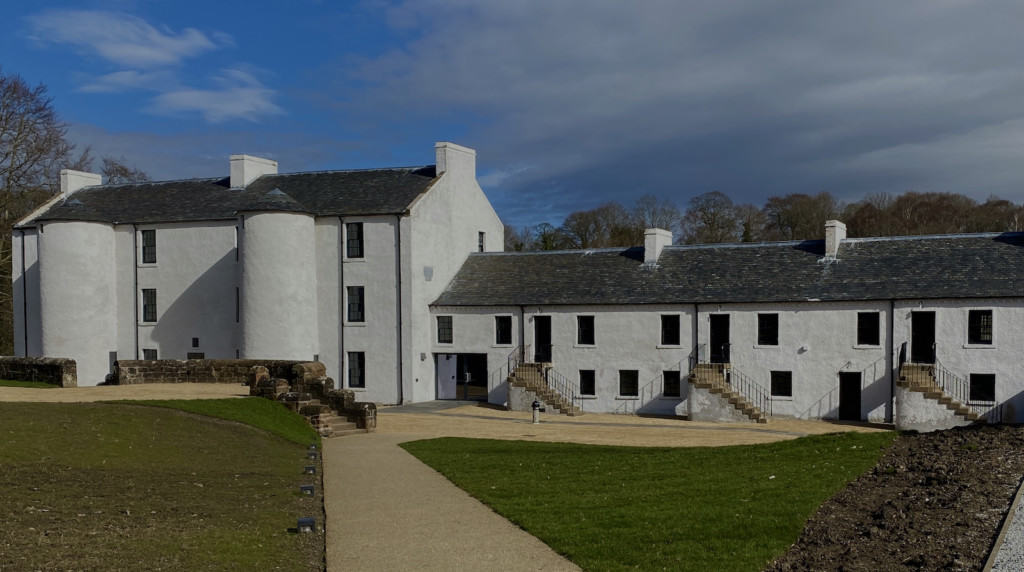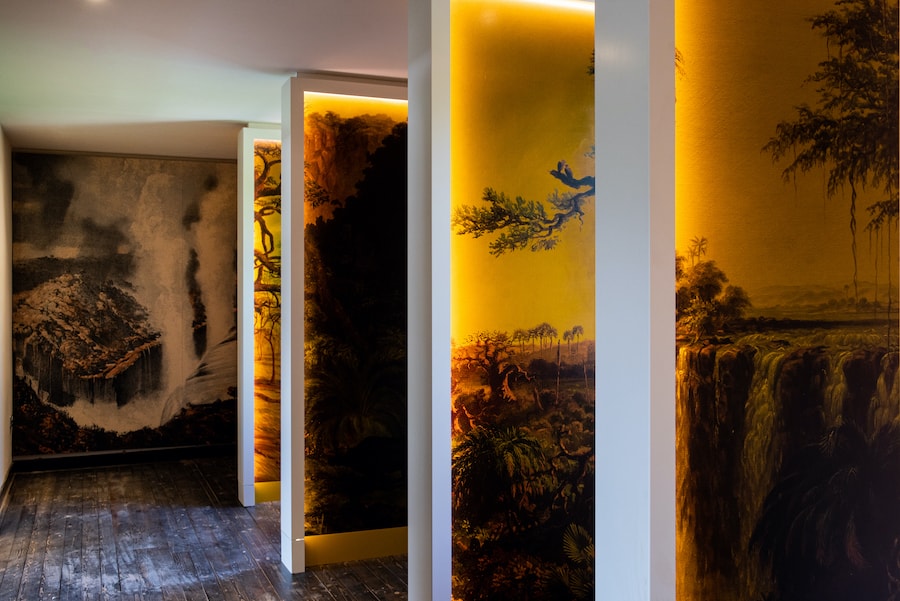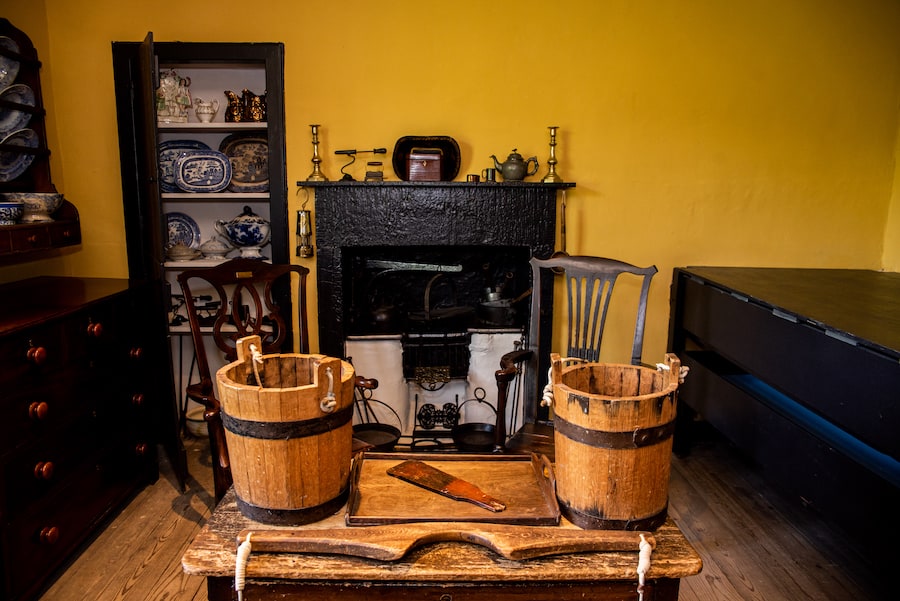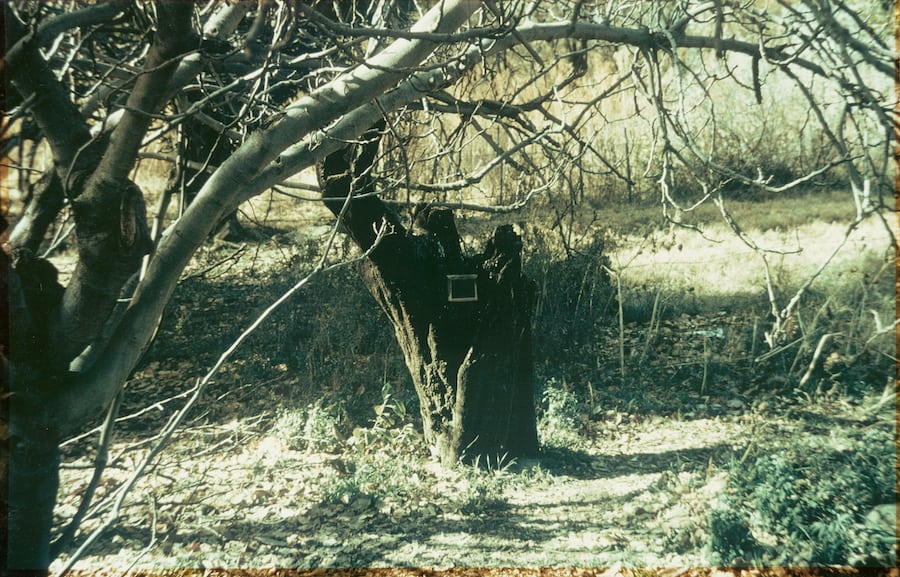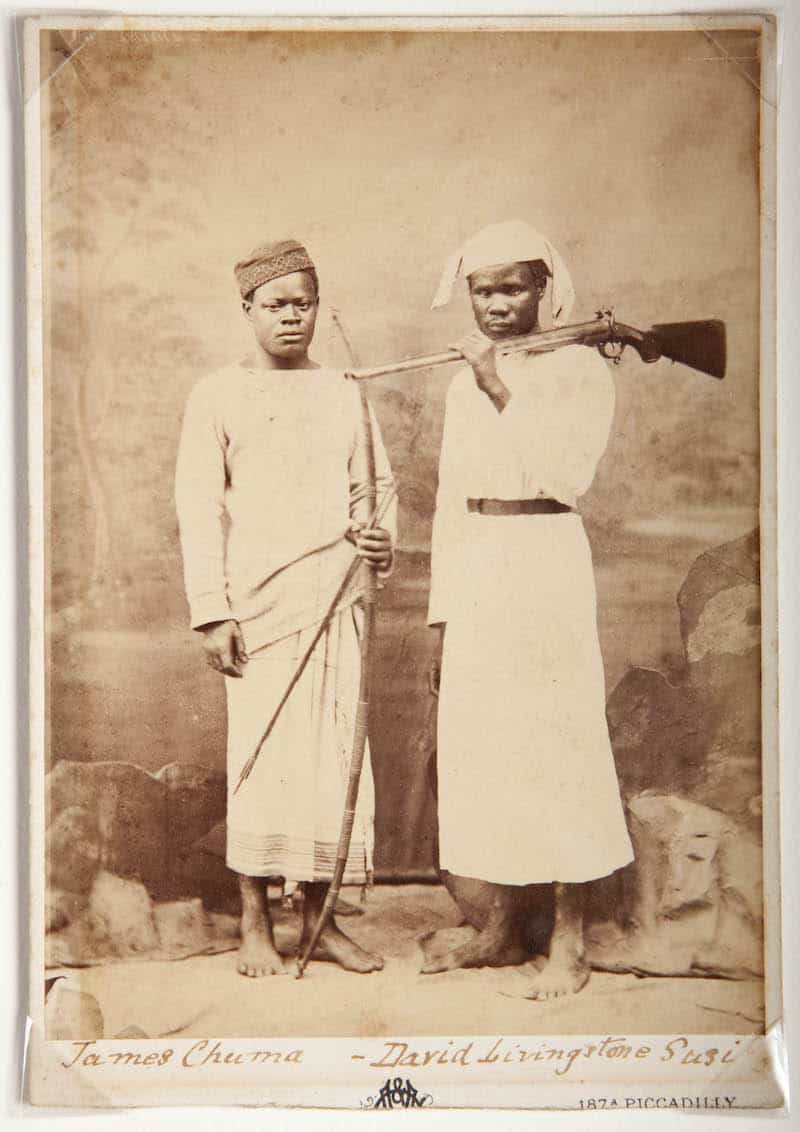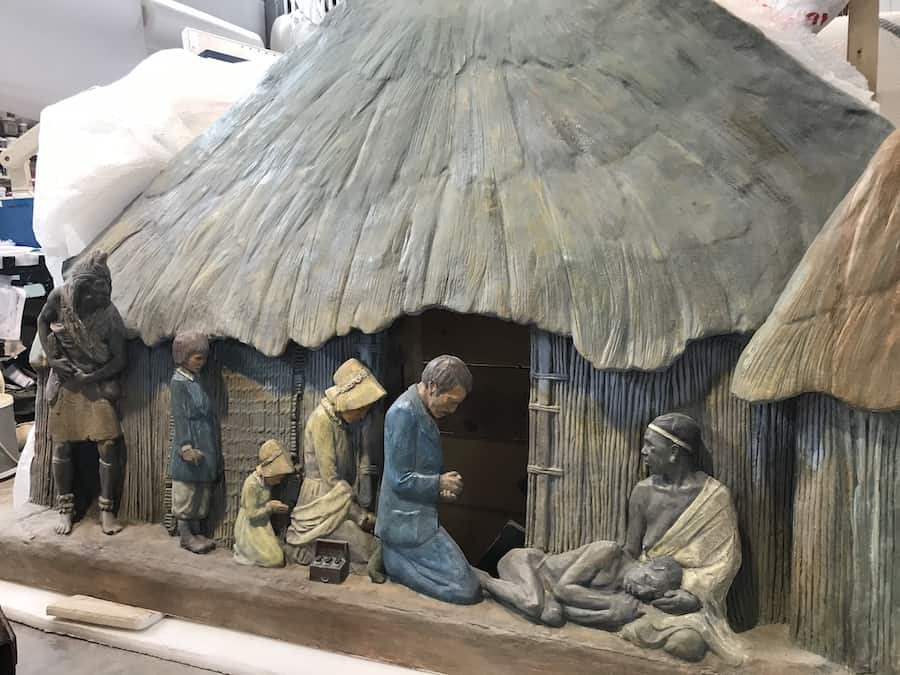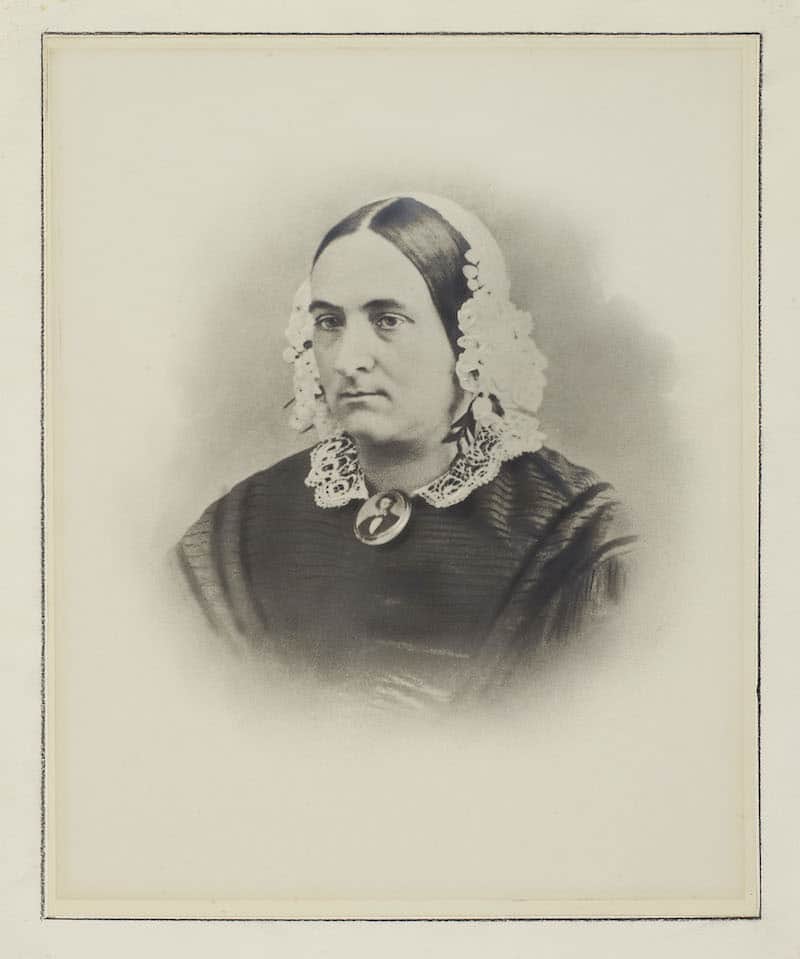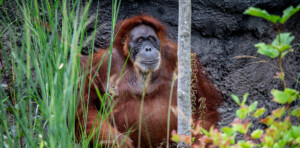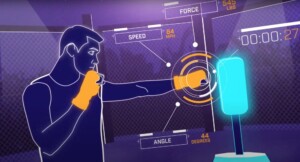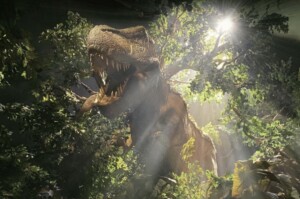The David Livingstone Birthplace, a museum in South Lanarkshire dedicated to the Scottish explorer, opened on 28 July 2021 after a £9.1m regeneration project.
Grant Mackenzie is interim Museum Director for the re-launch of the National Lottery Heritage Funded Birthplace project. He has over 20-years’ experience in the tourism and heritage sector and was involved in launching the Kelpies and Helix project and working for National Museums Scotland. He is also a Board Member of the Queen’s Hall in Edinburgh.
Mackenzie has been working on the transformative David Livingstone Birthplace Museum project since 2017. He is responsible for Project Managing the new museum exhibition and managing the team delivering the endeavour, including interpretation, collections management and conservation.
In addition, his role includes planning all areas of the pre-operational phase including marketing, volunteering, liaising with funders, community & stakeholder engagement, visitor experience & retail/catering operations, and delivering 400k of additional fundraising for the Trust.
The project aims to re-ignite the story of David Livingstone and re-interpret it for a new generation. It involves the refurbishment of the Grade A-Listed building, a new and innovative exhibition with a clear focus on exploring multiple narratives, a refurbished cafe and retail space and a vibrant, pro-active activities programme.
Introducing the David Livingstone Birthplace Museum
Mackenzie became involved in the undertaking when he came on board four years ago, ostensibly for a six-month project:
“I’m still here, so it’s been a wee bit longer than six months. This is inevitable with this kind of project,” he says. “It often takes a bit longer dealing with a historic building. Plus, doing it during a pandemic, of course, adds another layer of excitement. I haven’t always used the term ‘excitement’, I’ll be honest.”
Previously, the National Trust for Scotland operated the site. In 2017, the David Livingstone Trust took over the operations.
“When we submitted an application to the Heritage Lottery Fund at the time, that was when the David Livingstone Birthplace Museum project kicked off. I was interested; I have worked in a number of heritage institutions, and David Livingstone was someone I’d never really come across, to be honest, in any detail.
“People heard about him in passing, but his story was relatively unknown. Livingstone’s profile, in the UK in particular, was quite low and had less relevance than it had done in the past.
“It was an opportunity to find out about and work on something new. The area where we are based is one of Scotland’s five most deprived areas on the multiple deprivation index. To be able to work in a regeneration project that would help to support an area that needed some support, and to bring some tourism in was exciting.”
A surpise location
The David Livingstone Birthplace Museum is, he says, on a wonderful site:
“I don’t like to use this term, but I’m going to: it’s a hidden secret. Hopefully, it won’t be, soon. It’s very lush and green, right next to the River Clyde. The site was a former mill, and the place where Livingstone was born in the tenements is still there. It’s one of these surprise places that you discover; having come through a built-up urban area, you come out into this beautiful location next to the river. It is a nice place to visit.
“The fact it was something new and different in such a location interested me initially, along with the prospect of working on that a place that’s just about one person. That is interesting and quite unusual. It has been really enjoyable to do that.”
Raising the explorer’s profile
Livingstone was one of the most popular British heroes of the late 19th-century Victorian era, but while the phrase ‘Dr. Livingstone, I presume?’ has survived to the present day, beyond that the Victorian missionary and explorer’s story has sunk largely into obscurity. For this David Livingstone Birthplace project to succeed, the museum needs to raise his profile in order to engage audiences:
“When we started out, we did an initial marketing review of Livingstone, and one of the things that came up was that, potentially, Livingstone himself was a wee bit of a barrier to people actually coming along to the centre, because his relevance had become so much less.”
“We had to explore how to make him more relevant. Since the previous exhibition, there’s been a lot of research done on Livingstone. He wrote a lot about himself, so there is a lot of information out there about him. But one of the things that was less apparent in the stories was the people who actually helped Livingstone.”
Livingstone’s companions
The companions who accompanied Livingstone on the expeditions were very important to his story, Mackenzie says:
“When many of the books about Livingstone were written, there wasn’t much information about them. Some of them weren’t named, some of them weren’t actually written about.”

“We have found out a lot more information about them since then, and we wanted to try and focus on them. This leads to focusing on areas such as black history, the impact of colonialism. We are moving the narrative on from just hero-worshipping Livingstone, to use a slightly flippant term. We are, instead, trying to look at him, warts and all.”
The other side of the story
Livingstone came from humble beginnings:
“He was born here, he worked in the mill, and lived in one room with six other people. He worked extremely hard to become a doctor. Livingstone was self-educated and walked eight miles into Glasgow at three or four in the morning each day, and back again, then did some more work. He is, in many ways, a positive role model.”
“There is, though, the other side of the story; some of the activities that he did and the explorations in which he took part in Malawi, Botswana, Zambia, Zimbabwe, were allied to Western powers colonising the countries.
“It wasn’t something he was planning, but there was an inevitable impact. What we’ve tried to do is widen the story out a bit, and put it more in a world context. In doing this, the interpretation taps into current issues, including Black Lives Matter, and discussions around how we look at people like Livingstone.”
David Livingstone Birthplace Museum is objective
This is an in-depth, objective exploration of the history, rather than a rewriting.
“It’s very much fact, not fiction. We’re not being driven by any one agenda. However, it is the fact that the accepted story wasn’t completely true, in some of the ideas that we expect. We’re not certain, even, that ‘Dr. Livingstone, I presume’ actually ever happened. Though it’s a great story.”

The David Livingstone Birthplace Museum’s approach is now more relevant to the interests of contemporary audiences. However, that doesn’t mean the other areas, such as religion, which was a big part of his life, are being brushed over:
“He was a missionary,” Mackenzie says. “But he actually only converted one person, then stopped being a Christian, so he wasn’t a hugely successful one. He was much more successful as an explorer. Again, he made mistakes in his explorations, but he became famous. One of the reasons he became famous was because, for a number of years, he wasn’t able to be found, until Henry Morton Stanley found him, with the immortal words, ‘Dr. Livingstone, I presume’.
“We’re using little bits of that story as hooks to get people more interested in the much more nuanced story.”
A large collection
The David Livingstone Birthplace Museum has a 4,000-piece collection; many of the artefacts are from Livingston’s expeditions.
“We have a cast of his arm, for example,” he says. “On one of the expeditions, a lion attacked him and bit his arm. One of his companions shot the lion or scared it away, and it ran off. The story went around that Livingstone literally fought the lion, but that’s stretching the story a bit far. The cast of the humerus is in our collection.”

Livingstone recorded the episode in his publication ‘Missionary Travels and Researches in South Africa: Including a Sketch of Sixteen Years’ Residence in the Interior of Africa’:
‘…I saw the lion just in the act of springing upon me…he caught my shoulder as he sprang, and we both came to the ground below together. Growling horribly close to my ear, he shook me as a terrier dog does a rat…Besides crunching the bone into splinters, he left eleven teeth wounds on the upper part of my arm.’
Displaying more artefacts
“When Livingstone died in Africa, his heart was buried under the mpundu tree under which he died. But his companions took his body back, eventually, to Westminster, through West Africa.”
The embalmed body was carried in a cylinder of bark wrapped in sailcloth to the coast, sailing to London, and arriving the following year.
“The only way they could identify the body as being his was because of this mauled bone.”

In addition to this:
“We have around a 34% increase in the number of objects that are actually on display. Other key objects we have include Livingstone’s shirt. When he met Stanley, again, he was allegedly wearing a red shirt. And we have a red shirt that was allegedly the one. That red theme connects, actually, our whole exhibition. It is a chronological story.
“So there’s a red thread that weaves, literally, through the David Livingstone Birthplace Museum, and then ties up into the red shirt on display, then carries on throughout the museum.
“At the end of the exhibition, once you’ve finished the chronological story, we have a new piece of exhibition. This is called Legacy and looks at Livingstone’s legacy from lots of different perspectives, trying very much to portray contemporary Africa, and what its impact has been.”
A contemporary exhibition
The renovation has been done sensitively, he says:
“Architecturally, it’s contemporary; it is modernised, but it is very much in keeping with the building style. We have 22 interactives for kids of all ages to play with. It’s a very visually striking exhibition. We’re hoping that when people come in they will really appreciate the difference that we’ve made with the exhibition. We’ve worked very hard to try and ensure that we have a very high-quality museum.”
David Livingstone Birthplace Museum will attract global audiences
In the long-term, post-COVID, the museum, a world-class destination, hopes to attract audiences from across the globe.
“Livingstone’s reach in the UK has maybe dwindled, but internationally Livingstone has quite a strong connection with people. Before we closed, we had large groups of people from Malawi, Botswana and so on making a pilgrimage to the site. This is because the place where Livingston was born is quite significant to a lot of them.”
“We have lots of enquiries from the rest of Europe and America. So the museum clearly has an international reach.
“We’ve set out with the aim of being the best small museum in Scotland. Everything is to a very high standard. We were very keen that we would have something that looked visually different, was contemporary and brought in new and different audiences.
“The previous exhibition was fairly tired. In order to understand why we needed to spend money on the building, you only needed to visit it. It was damp in a lot of areas because the building should have lime render on it, and in the seventies or eighties, concrete render was used, which allowed it to become porous. Instead of breathing, it was retaining the moisture.”
Recontextualising the story
The Trust has worked hard to bring in a small, dedicated team, funded by HLF, to drive the project forward. The David Livingstone Birthplace Museum will be largely volunteer-run.
“We’re working with training up our staff. Obviously, the story for some of them has changed slightly,” Mackenzie says.
“We are working with Mercat Tours in Edinburgh to develop a tour around the museum. This will give people a personal interaction, and perhaps some different stories through our tours. We’re ensuring that our story has both local and international appeal. We’ve been working on recontextualizing Livingstone’s story for over four years now.
“Compared with some other museums and attractions that are trying to incorporate some of the equality and diversity issues, we were already quite far down the road when Black Lives Matter happened last year. We’ve been discussing these issues for some time. Of course, this is very much a starting process. We won’t get absolutely everything right. But we feel that we have been very robust in what we’re doing and that it will be a world-class attraction.”
New perspectives at the David Livingstone Birthplace Museum
The exhibition designers the team have been working with are Event Communications, based in London. “ We’ve also worked with people like Petina Gappah, the Zimbabwean lawyer and writer, who wrote a novel, Out of Darkness, Shining Light, that is a fictionalised account of the journey David Livingstone’s workers took transporting his body,” Mackenzie explains.
Gappah’s book focuses on Livingstone’s companions and touches on the East African slave trade that many of them witnessed firsthand:
“It has been a really interesting process to go through,” Mackenzie says. “We have sculptures date back to 1929 when the Trust started. These depict a very romanticised version of episodes in Livingstone’s life. “
“In several, Livingstone is standing up, looking down on the Africans; they are very much of their era and of their time. We’ve included more information to explain them. But one of the things we’ve done with Petina is to produce an animation where the characters behind Livingstone or kneeling in front of him come to life and tell their stories.”
Mary Livingstone
One of the individuals highlighted is the too-long overlooked Mary Livingstone, nee Moffat, David Livingstone’s wife, a seasoned traveller and gifted linguist:
“She really supported him through his expeditions. When he came to Africa, he couldn’t speak the language. Mary Moffat spoke several African languages and was an experienced traveller. She smoothed his path and acted as interpreter. He wouldn’t have been able to communicate with anybody if she hadn’t been there. We’re telling bits of this and other stories, and taking quite a novel and artistic approach, which, I think, makes us stand out.”
David Livingstone Birthplace Museum will engage with a new audience
Completing a project of this magnitude in a pandemic is quite an achievement, says Mackenzie:
“It has been, obviously, massively challenging for everyone. Working on a project which relies on things like concrete being brought in becomes problematic when there are supply issues, making things more complicated.
“But I think this period has also given us an opportunity to think; a wee bit more time to look at what we’re actually producing and to refine the visitor experience and the visitor offer in many ways. People are keen to leave their houses to come and visit something new, too. And that’s what we’re going to be able to offer.
“I try to look at some of these delays and things that have happened as positive. In 2021 we won’t have an international audience. However, this gives us an opportunity to really engage with our local audience. We recently opened up a new play park, a cafe and a shop as well.
“We’re trying to be positive. But I actually feel that opportunities have fallen into our lap a little bit, giving us a real reason to engage with new audiences.”
Top image, credit Iain Douglas
